Income Statement: the Formula that Tells if We Make a Profit or Loss
To know whether your biz makes a profit, you have to understand Income Statement - the formula that tells if you make a profit or loss.
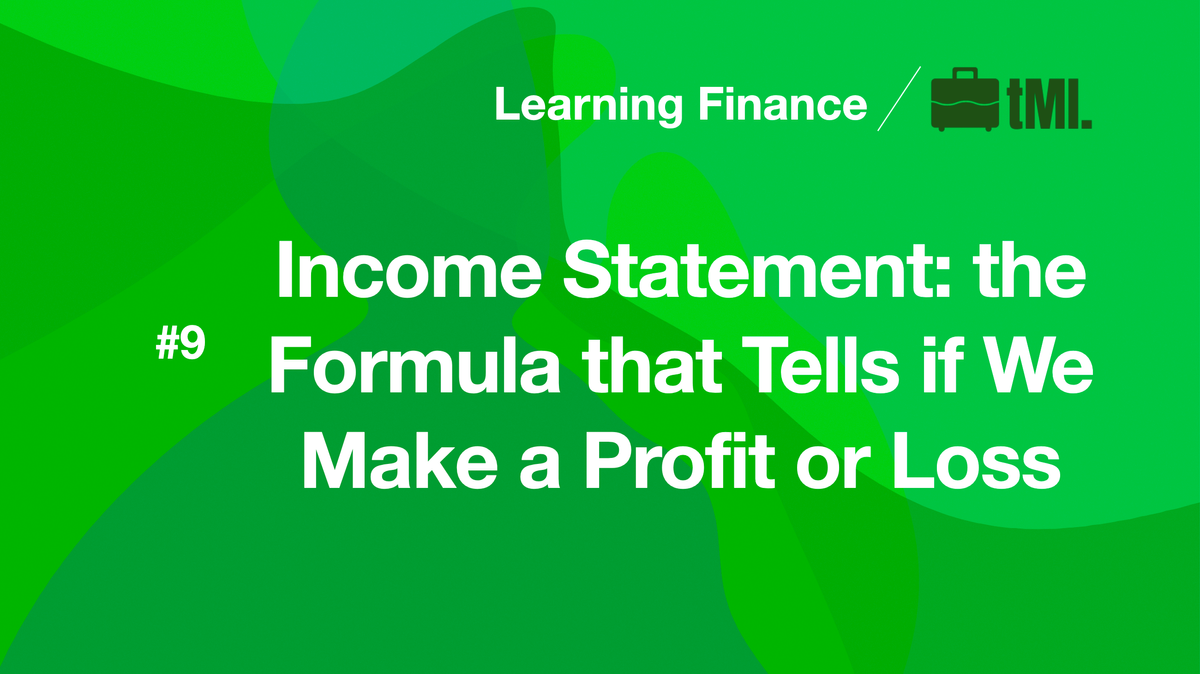
In previous episodes of the Learning Finance series, We've learned Basics of Balance Sheet, different types of assets, how to use Balance Sheet to understand how companies work, and the basic rules of asset pricing system. We've also learned different types of liabilities, the four components of the Shareholder's Equity, and what the balance sheet actually tells us, i.e. the information behind the terminologies and numbers.
In the balance sheet, we've already learned what our investment has become, and we can see if our initial investment's value is guaranteed. But this is not enough - we want to know if we are making a profit.
That's when the second financial statement comes in - Income Statement.
Within this process of money - things - money, the part that's directly related to making money is when I sell my products. Once my products are sold, revenues are generated. Obviously, the revenue I receive comes at a price. When I sell a product, it no longer belongs to me; what I have lost here is the cost associated with acquiring the product.
In addition, in order to run a company I will need to pay for all kinds of bills, bills to keep the lights on, etc. These are called expenses.
As you can see, knowing if my company is making a profit is not easy. That's why I need a report - the Income Statement- to help me understand it. Now, let's see what a Income Statement looks like.
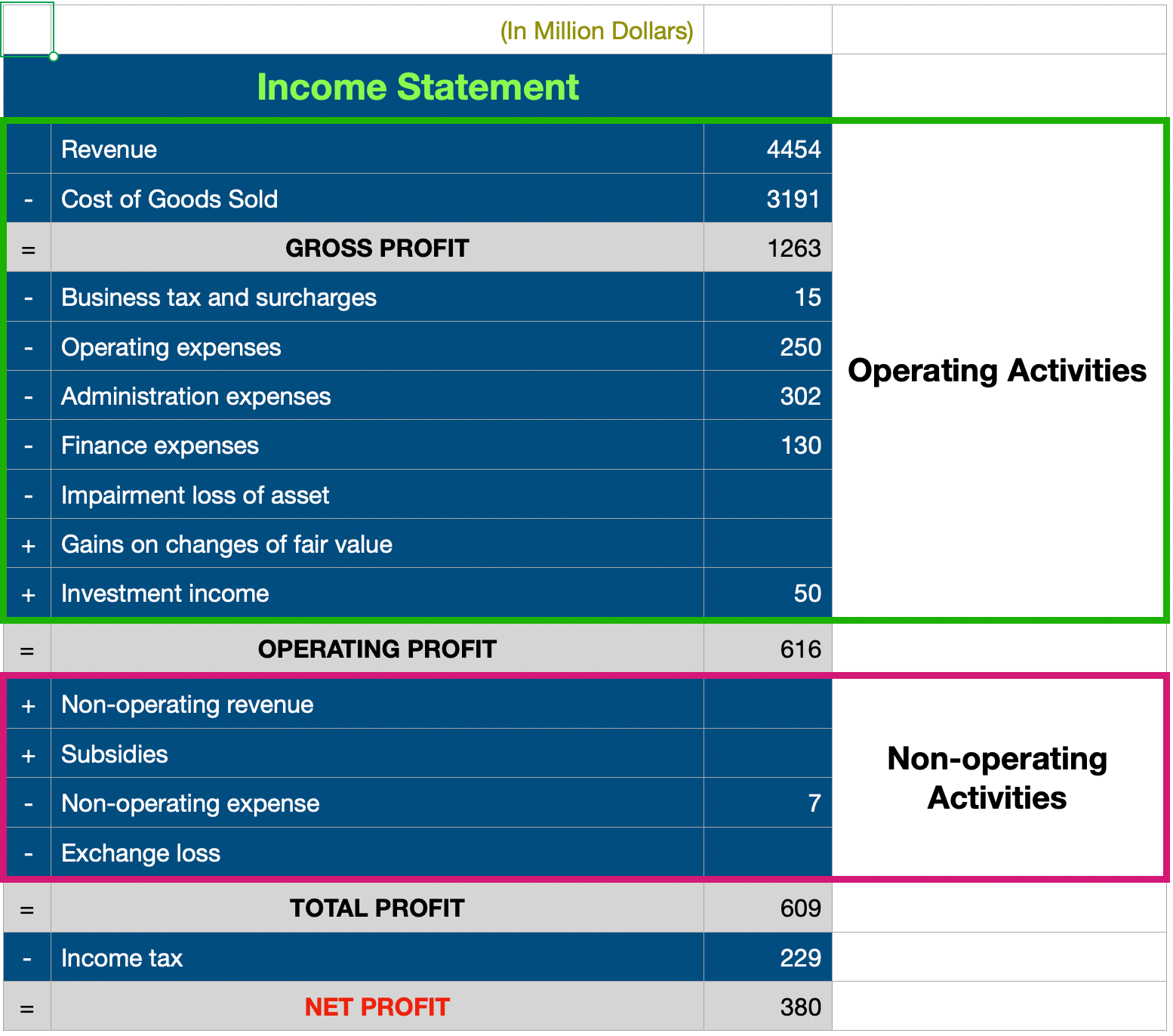
An income statement starts with the revenue and ends with the net profit. In between you will find numerous costs and expenses. The top of the income statement describes money generated or spent from the company's operating activities, i.e. its main business operations, and the bottom describes that from the company's non-operating activities. After going over this post, you will be able to understand all of them.
Operating Activities
Cost of Goods Sold
The first line item is revenue. When I sell a product, I will get revenue associated with the selling of the product, but I also lose the ownership of the product, therefore the cost of goods sold.
A commonly heard concept is gross profit. But what is gross profit? Well, revenue minus cost of goods sold is gross profit.
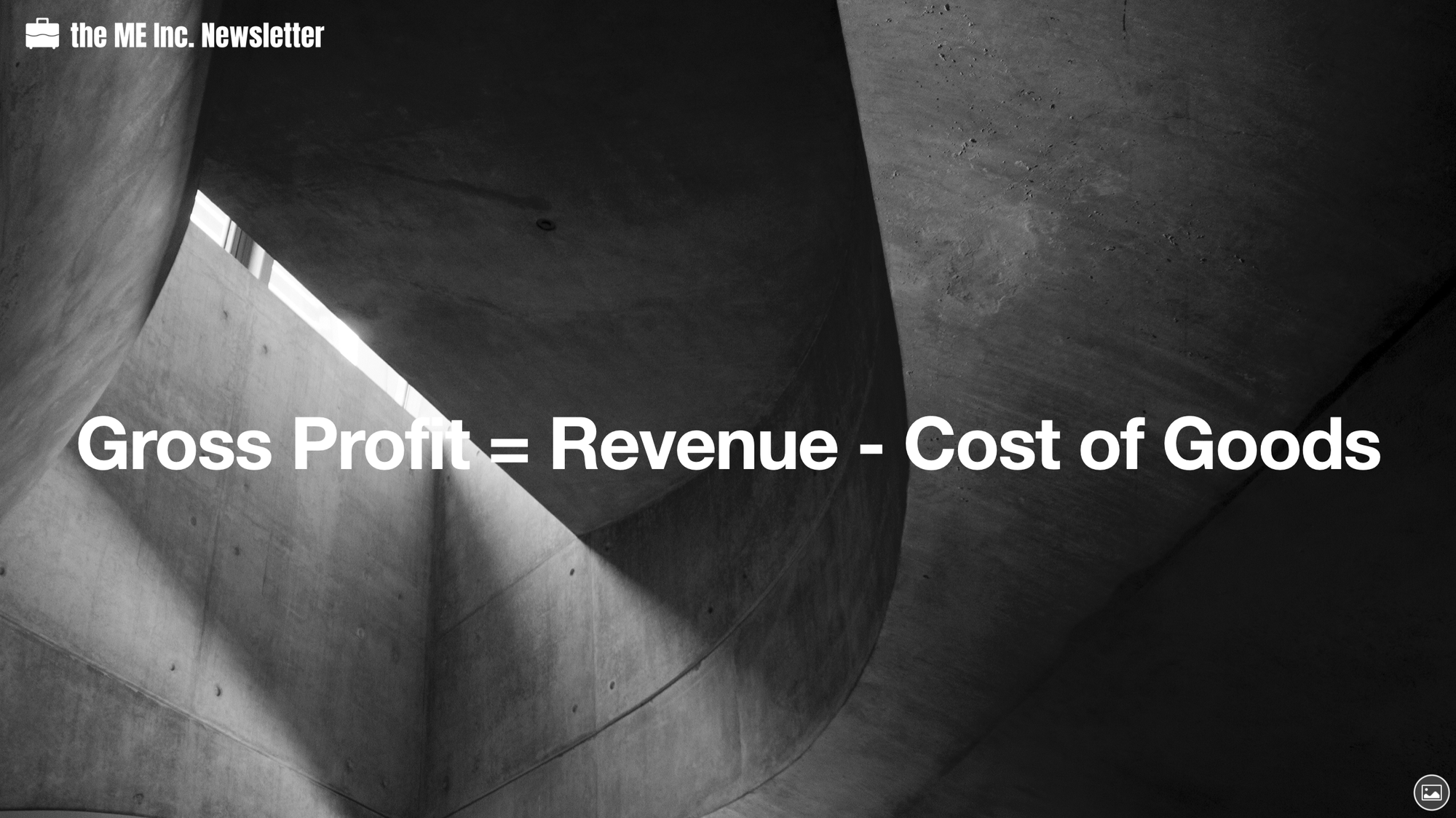
Business tax and surcharges
Now let's look at the next item -- business tax and surcharges.
Generally speaking, there are several common corporation taxes, i.e. business tax, value-added tax (VAT), and income tax. Taxation is a complex topic individual to each country, so not everything you find here will apply to your home country. For example, not all countries have business tax and VAT, and some countries have additional types of taxes. However, you should get a basic feeling of what fits where after this.
Income tax should only apply when there is income, or profit. Therefore, it should appear only after total profits. When I subtract income tax from total profits, I will get my net profit.
Business tax and surcharges means if I am operating a business, regardless of whether I make a profit or not, I will need to pay for the tax and charges. Categorically speaking, these kinds of taxes are called turnover taxes.
Both business tax and value-added tax are turnover taxes.
However, you may have noticed that VAT is nowhere to be found on the Income Statement. That's because VAT doesn't belong here.
Now why is that? Why is business tax on the income statement, but VAT is not, considering that both are turnover taxes?
One major difference between business tax and VAT is that business tax is included in the price of product, but VAT is on top of the price of product.
Let's see an example.
If I order food at a restaurant and pay 100USD for the dishes, the restaurant needs to pay business tax on that money. Let's say the business tax rate comes at 5%. I will not pay 105USD because of the 5% business tax, meaning that the restaurant's take-home revenue of my 100USD is 95USD.The business tax is included in the price, borne by the restaurant (seller).
In certain countries, you will encounter situations where you will see the extra tax amount on top of your standard meal prices. However, those taxes are NOT business taxes; they are a form of consumption tax.
But VAT is different.
For example, if I go to buy a computer, there will be VAT incurred for this transaction. Before applying the VAT, the computer price might be 1,000USD. After applying the VAT, the price comes up to 1,170USD because of a 17% value-added tax. So if I only pay 1,000USD, the seller won't give me the computer. I will have to pay 1,170USD so the transaction can come through.
For this transaction, who paid for the 170USD VAT?
The consumer.
The second major difference between business tax and VAT is that business tax is borne by the business, i.e. the seller, but VAT is borne by the customer, i.e. the buyer.
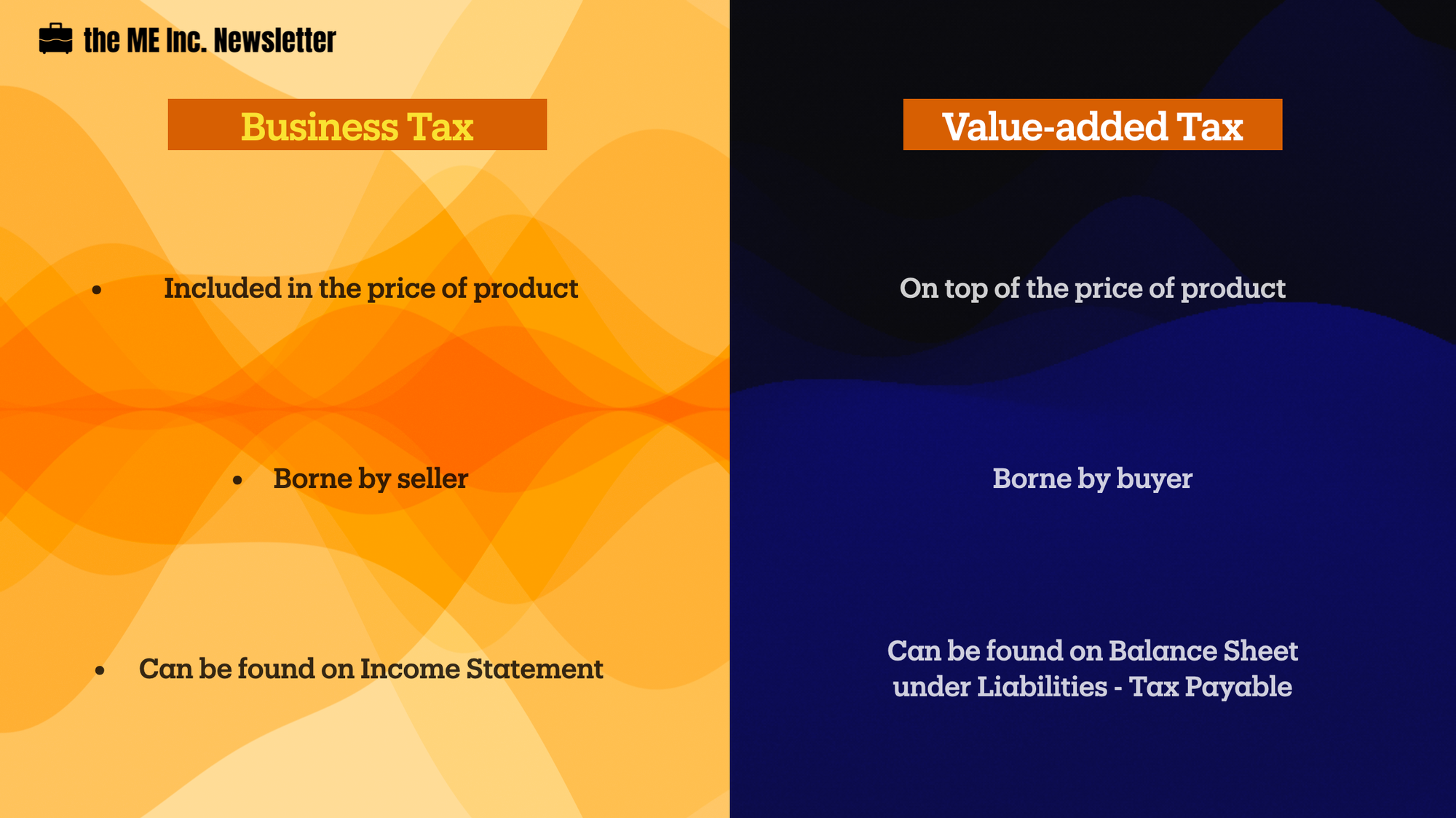
Now you should understand why VAT cannot be found on the Income Statement.
Because the company pays for Business Tax, but consumers pay for Value-added Tax, the VAT on consumers shouldn't be a company's cost. That's why we cannot find VAT on the Income Statement.
In practice, we as consumers don't go to the tax bureaus every day to pay VAT on everything we've purchased. Instead, we give the VAT to the seller, and the seller will periodically pay the VAT withheld to the tax bureau. From the seller, i.e. the business's perspective, that VAT should never be accounted for revenue. On the other hand, since the VAT belongs to the tax bureau, but just temporarily sits in the business's bank account, it's actually a liability owed by the business to the tax bureau.
For this reason, we actually can find VAT on the Balance Sheet, under the Liabilities section. It's called tax payable.
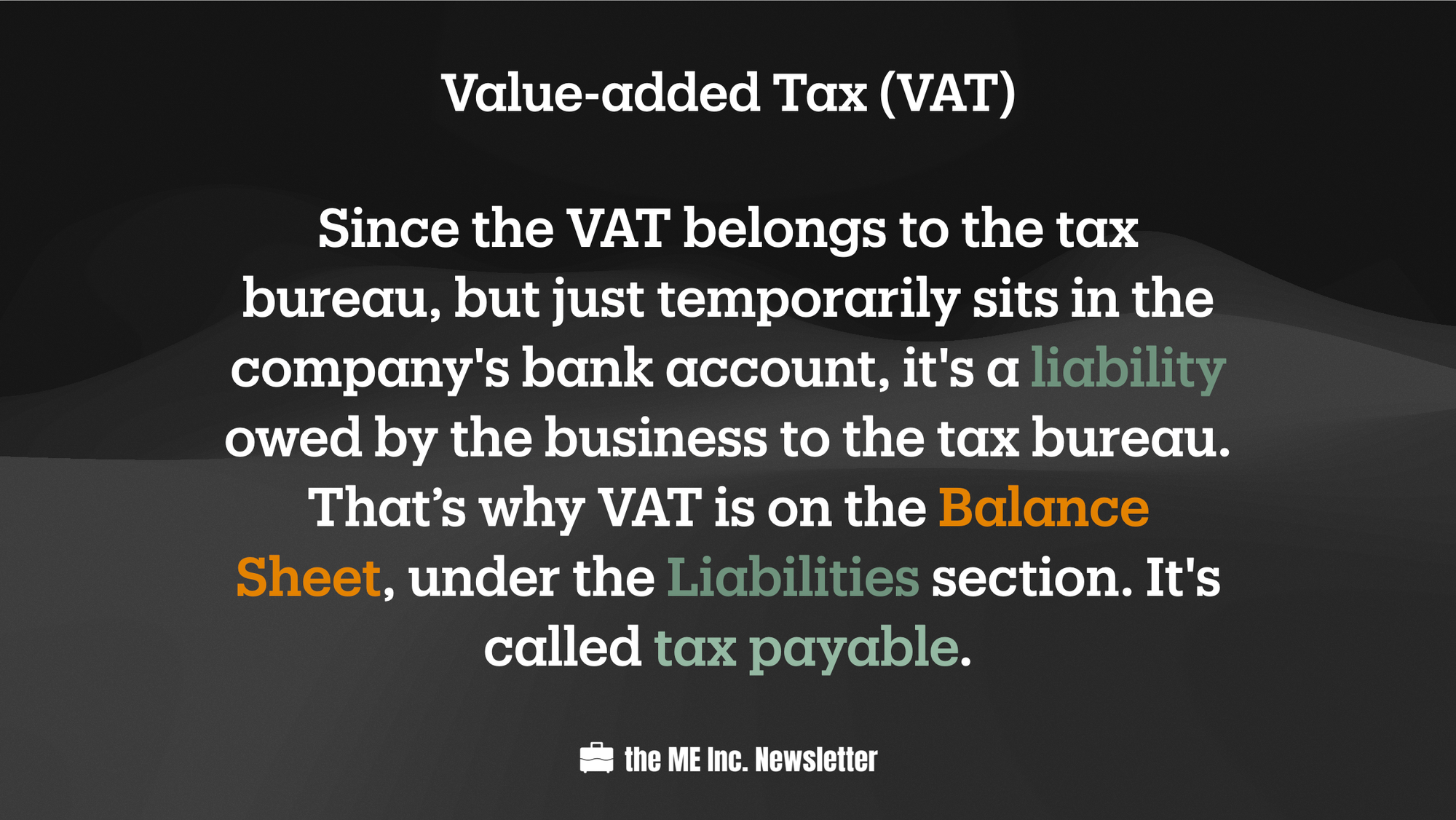
After this tax item, we see three expense items: operating expenses, administration expenses and financial expenses. These three items are what we usually call period expenses.
Operating Expenses
What is operation?
For a manufacturing company, its operations are manufacturing and sales. So what are operating expenses?
Operating expenses are related to the company's operations, i.e. advertisement costs, transportation expenses, warehouse fees, etc.
Expenses of different departments could fit in the operating expenses. For example, cost of promotions, salary of sales people, and various marketing expenses make up the operating expenses of sales departments. Another example would be company stores if the company has retail spaces. If the stores are leased, the rent paid out is operating cost. If the stores are owned by the company, the depreciation counts as operating cost as well.
Administration Expenses
Everything related to the management of the company is Administration Expenses. For example, the salaries of managers, administrative expenditures and depreciation on office building, etc., are all administration expenses.
One thing you might have already noticed is that different employee salaries are categorized as different types of expenses. For example, salaries of marketing and sales employees are operating expenses, but salaries of managers are administration expenses.
But what about wages of workers (in the context of a manufacturing company)? Where should this item fit in? Workers wages are direct manufacturing costs, so it should be put directly in costs of goods sold.
Depreciation of fixed assets should also be recorded in costs of goods sold, since fixed assets are directly used for producing the company's goods. If the purpose of different fixed assets is different, the depreciation will go to a different category. For example, the depreciation of the stores is a sale expense, or operating expense, while that of an office building is an administration expenses.
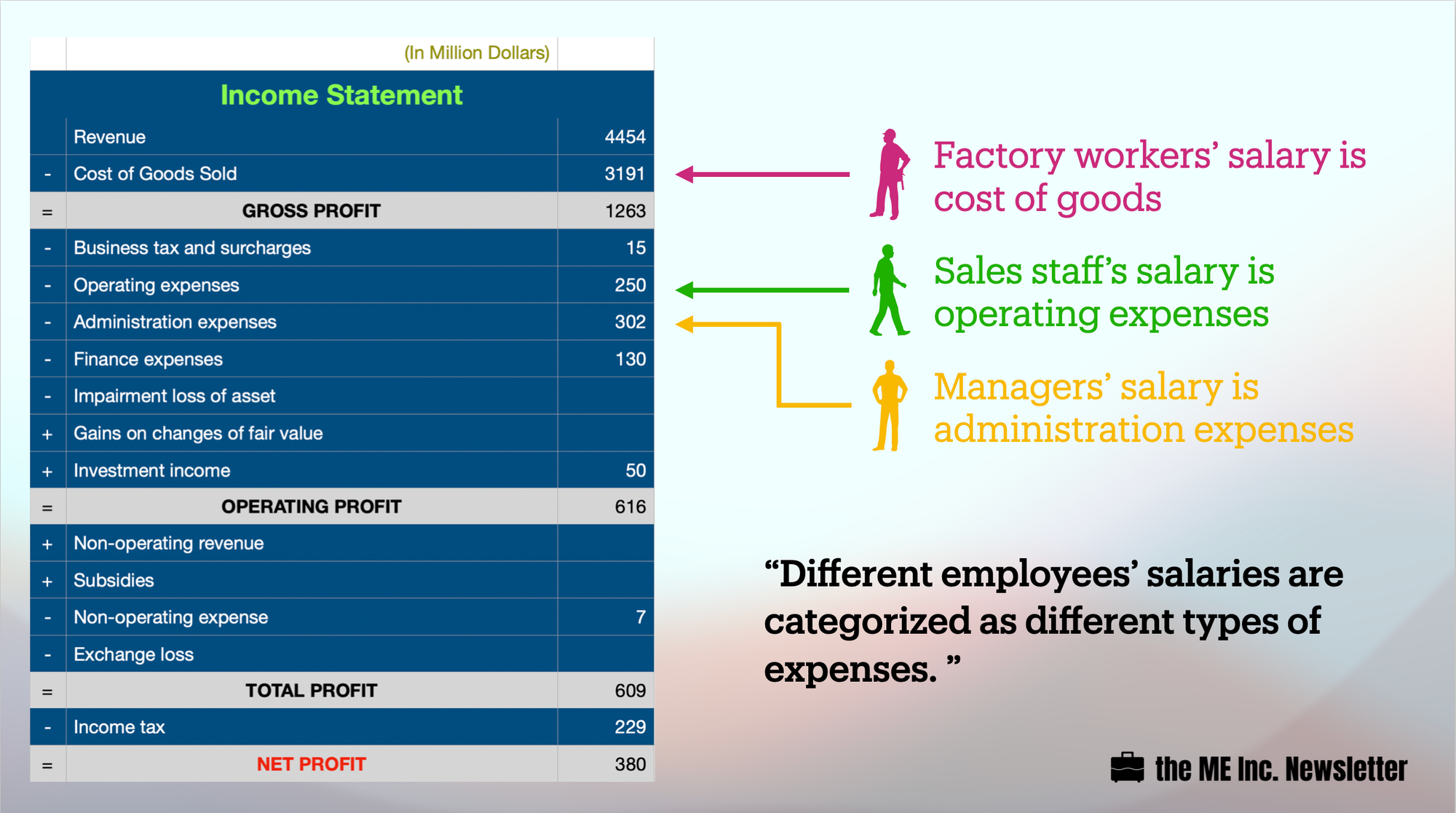
Financial Expenses
Financial expenses are pretty straightforward; they are basically interests. Whether the interests you owe to the bank when you borrow, or the interests you earn from deposit savings from the bank. Since we are recording expenses, the former will be positive, i.e. money going out, and the latter will be negative, i.e. money coming in. In other words, when you are paying interests to banks, interest expenses are positive; when you are earning interests from banks, interest earnings are negative.
Say a company has raised a large amount of money from investors, and they are not going to spend all of the money immediately. The money left in the bank will generate interest revenue. What if the money is raised by selling stocks?
The company may have already paid off most of its debt, so there is little interests to be paid out. In this case, the interest expenses may become negative. In other words, the company is actually making money from money.
You may not always find three expenses in your Income Statement. In some countries, operating expenses and administration expenses may be combined as one item on the income statement.
Recall that at the beginning we said that revenue minus costs of goods sold is equal to gross profit. Then we subtract the business tax and surcharges and the three expenses from gross profit, further closing in on our profit from operating the business.
However, between financial expenses and operating profit, there are still three items left, which are impairment loss of asset, gains on changes in the fair value, and investment income.
Investment Income
For small companies that haven't made any external investments, there will be minimal need to worry about investment income. But let's say my company has a subsidiary company, and the latter gives me a dividend. This dividend is my income from investment.
Investment is a special form of operating business, so we still consider it part as part of operating profit.
Impairment Loss of Asset/ Gains on Changes in the Fair Value
If you recall in assets valuation on the balance sheet, most assets are recorded with their historical costs, but financial investments and real estate investments are marked to market with their fair values. If the fair market value of any of the former two types of assets decreases, we will need to recognize the loss on the balance sheet.
To make matters worse, it also affects the company's profits on the income statement.
If the asset price was 10USD last year and 15USD this year, I will get a 5USD gain. If it was 10USD last year and 5USD this year, I will get a 5USD loss. The new value of assets should be updated on the balance sheet, and the change (gain or loss) should be updated on the income statement.
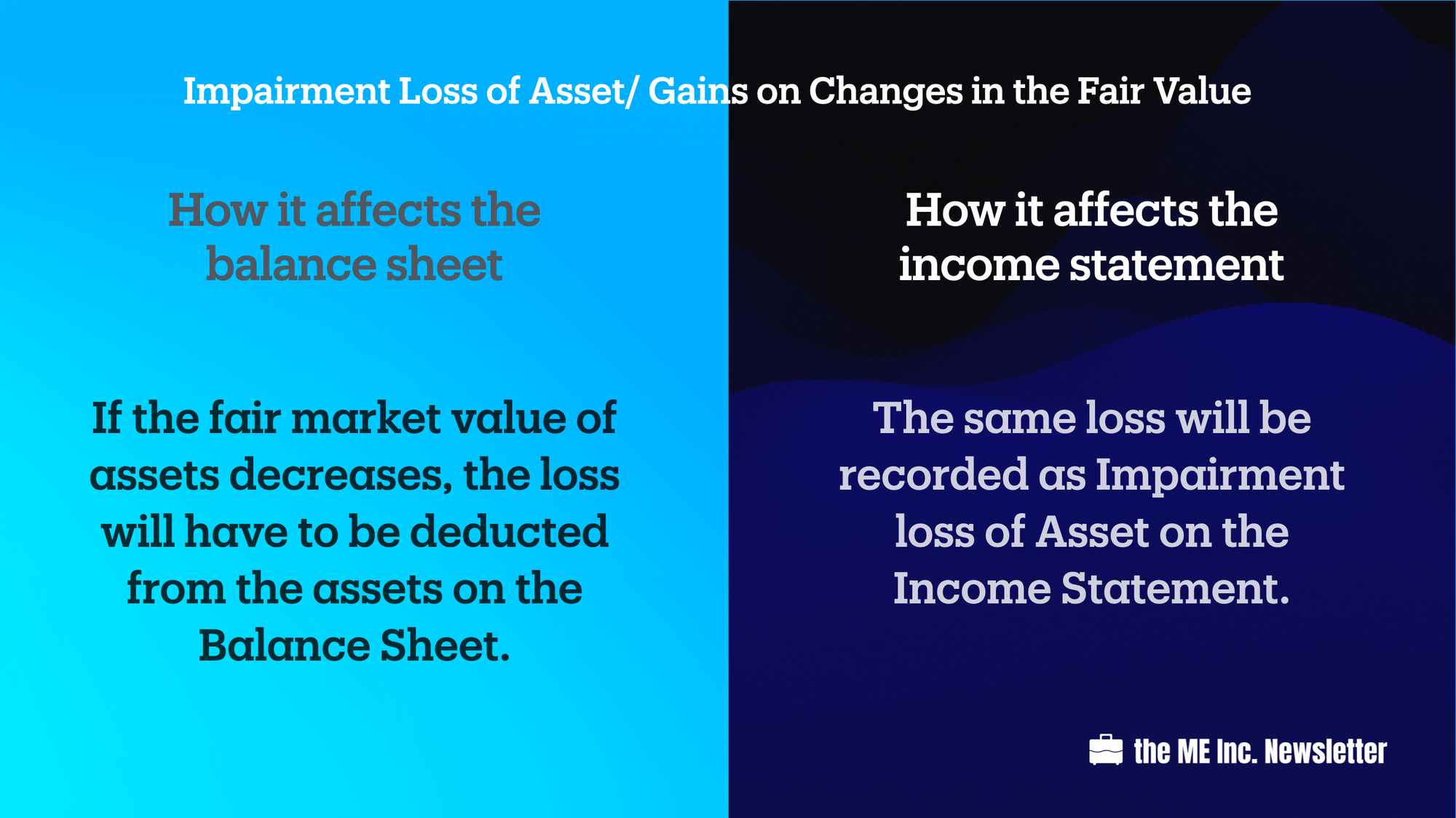
So far, we have subtracted the costs of goods sold from our revenue. We then paid the business tax and surcharges, as well as the operating, administrative, and financial expenses. After that we looked at our gain/loss from our investments and dividends generated from them. What's left is our Operating Profit.
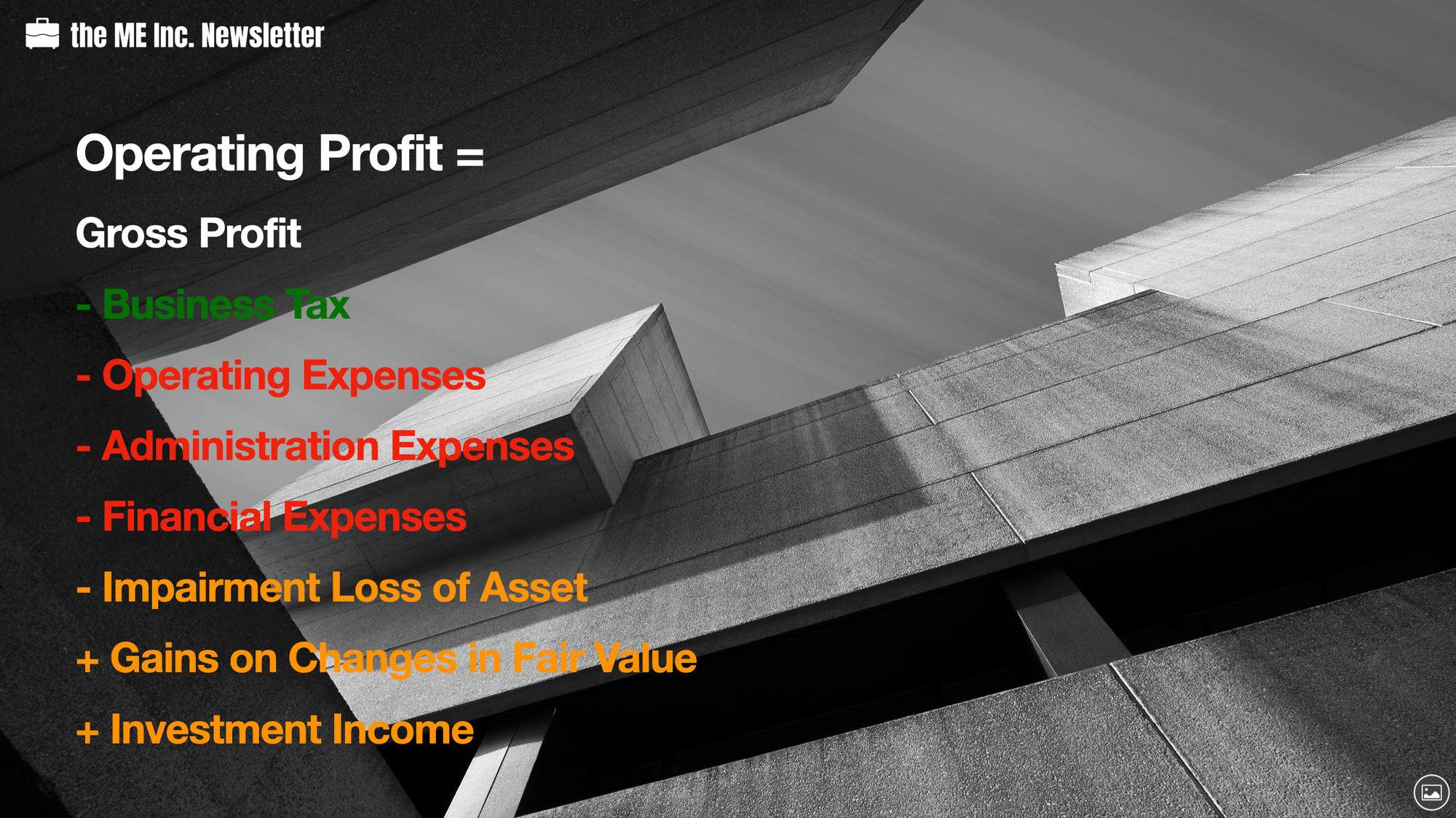
Non-operating Profit
The two items below Operating Profit are non-operating revenue and non-operating expenses. Let's look at non-operating revenue first.
Non-operating Revenue
What is a non-operating revenue? The straightforward answer is any revenue generated from non-operating activities.
Let's look at an example first.
A company checks its inventory and finds the actual inventory exceeds that on the books. This is called Excess Inventory. In this case, the excess inventory is a form of non-operating revenue.
Another example is when a company sells its fixed assets.
We know that the goal of a business is to sell products to earn profits. Its fixed assets are required to produce products. However, there might be instances when the company decides to sell part of its fixed assets on an ad-hoc basis, and when it does, the sale will generate a large sum of money. This will also be recorded as a form of non-operating revenue.
Non-operating Expenses
We just talked about excess inventory as a form of non-operating revenue. Similarly, when we check our inventory but it turns out our inventory is less than what we've recorded on our balance sheet, we say there is a shortage on inventory, which is a form of non-operating expenses.
Things like losses caused by accidents such as natural disasters, i.e. fire, flood, etc., are also non-operating expenses.
Why do we list Non-operating Revenues and Expenses separately?
Let's look at what non-operating revenues and non-operating expenses have in common. They are both unrelated to the company's operating activities. These activities happen by chance and don't have continuity in the company's plans.
What's the benefit of listing non-operating revenues and expenses separately? Let's look at this example.
Assuming that I have two companies. Both companies have a profit of 10 million dollars. For the first company, 9 million is operating profit and 1 million is non-operating profit. For the second company, 1 million is operating profit and 9 million is non-operating profit.
Which company would you like to invest?
For me, it is a no-brainer. I definitely will invest in the first company, even though both companies make the same amount of profit.
The reason is simple. I believe the first company will make at least the same amount of money the next year, but I highly doubt that the second company will manage to do the same.
Why?
Because the most profit the second company generates is from non-operating activities, i.e. projects that are not continuous.
This is the benefit of listing operating profit and non-operating profit separately. It not only tells you how much profit the company makes this year, but also provides information on whether the profit is dependable. In this way, we will be able to predict the company's future profitability based on this year's income statement.
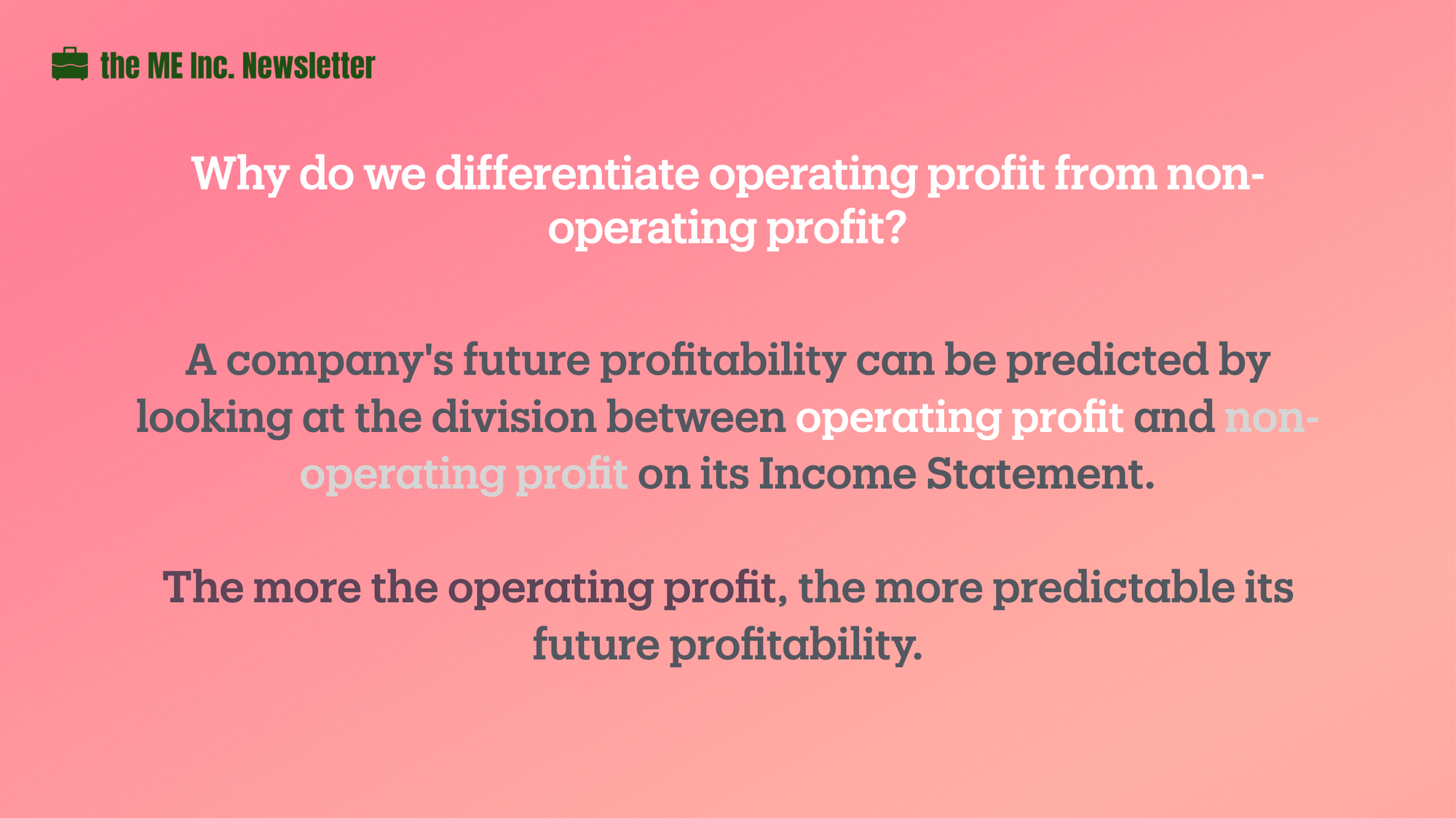
Subsidies and Exchange Gain and Loss
In some countries, companies might be able to receive government subsidies for participating in certain economic activities as a way to boost investment in certain industries. These subsidies are also a kind of non-operating revenue. However, they should be listed separately, and we call it subsidies. Subsidies should also be recorded in the non-operating profit and loss section.
Some companies might operate in multiple countries, so they might receive payment in one currency but pay suppliers in another. However, currency exchange rates change every day, and when they do, my profits may suffer a loss or post a gain. This is called exchange gain (or loss). Exchange gain (or loss) should also go in the non-operating profit and loss section.
Getting Close to Our Actual Profit!
Total Profit
By subtracting our non-operating expenses and adding our non-operating revenues onto the operating profit, we have arrived at our Total Profit. Remember: subsidies and exchange gains or losses should also be taken account in the non-operating profit.
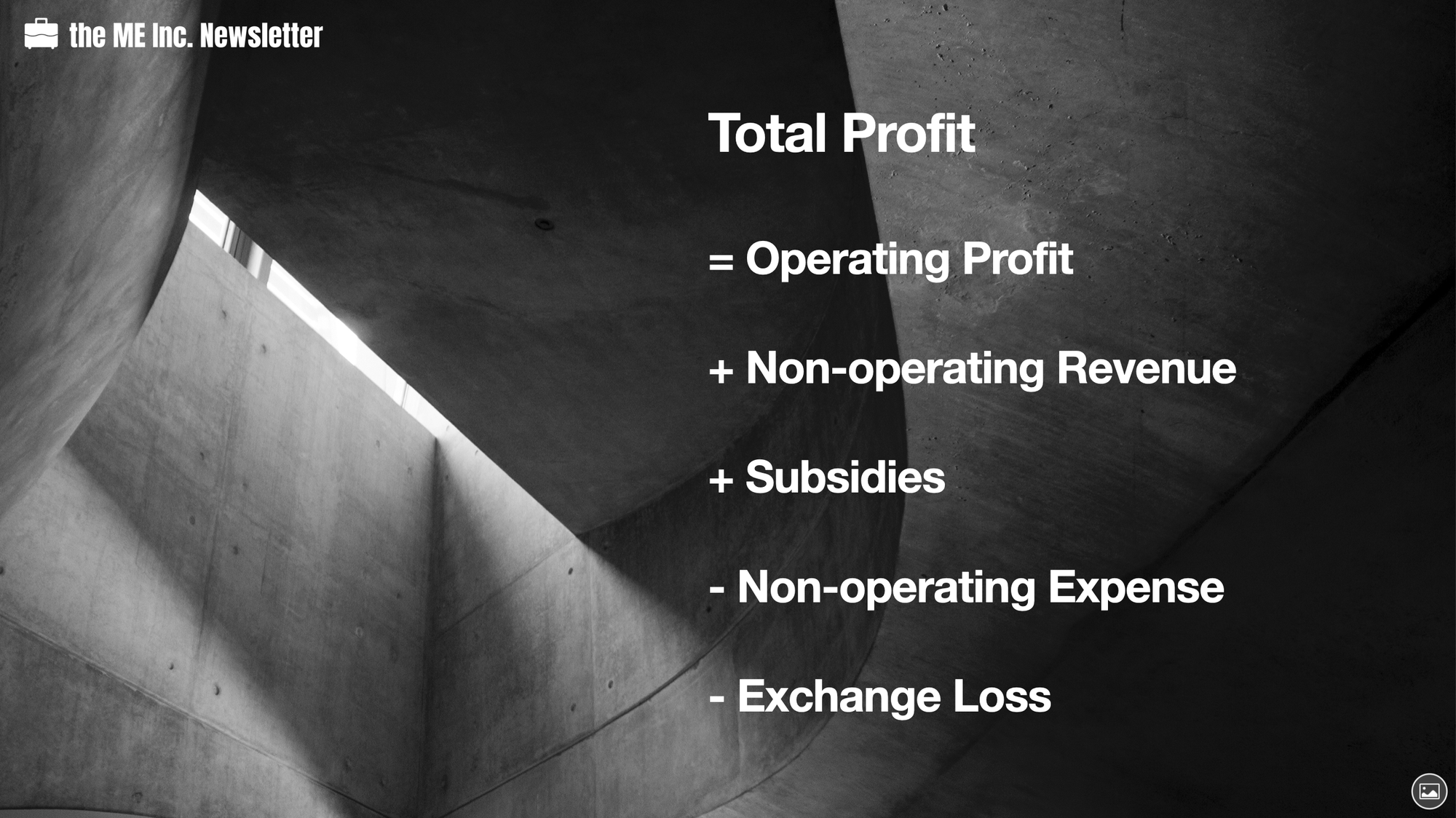
Net Profit
Now we've come to the final part. We have made some profit from the operations of the business, and have paid out our non-operating losses. After that, we still have quite some (total) profits.
Now there is still one thing left: income tax.
Depending on your country and industry, etc., business income taxes can range from 15% to 25%, or even more. For example, China has a business income tax of 25%, but can go as low as 15% for tech companies.
At this point, most people like me would assume that 75% of the total profit will be our net profit.
However, this is not the case. Let's look at our Income Statement again.
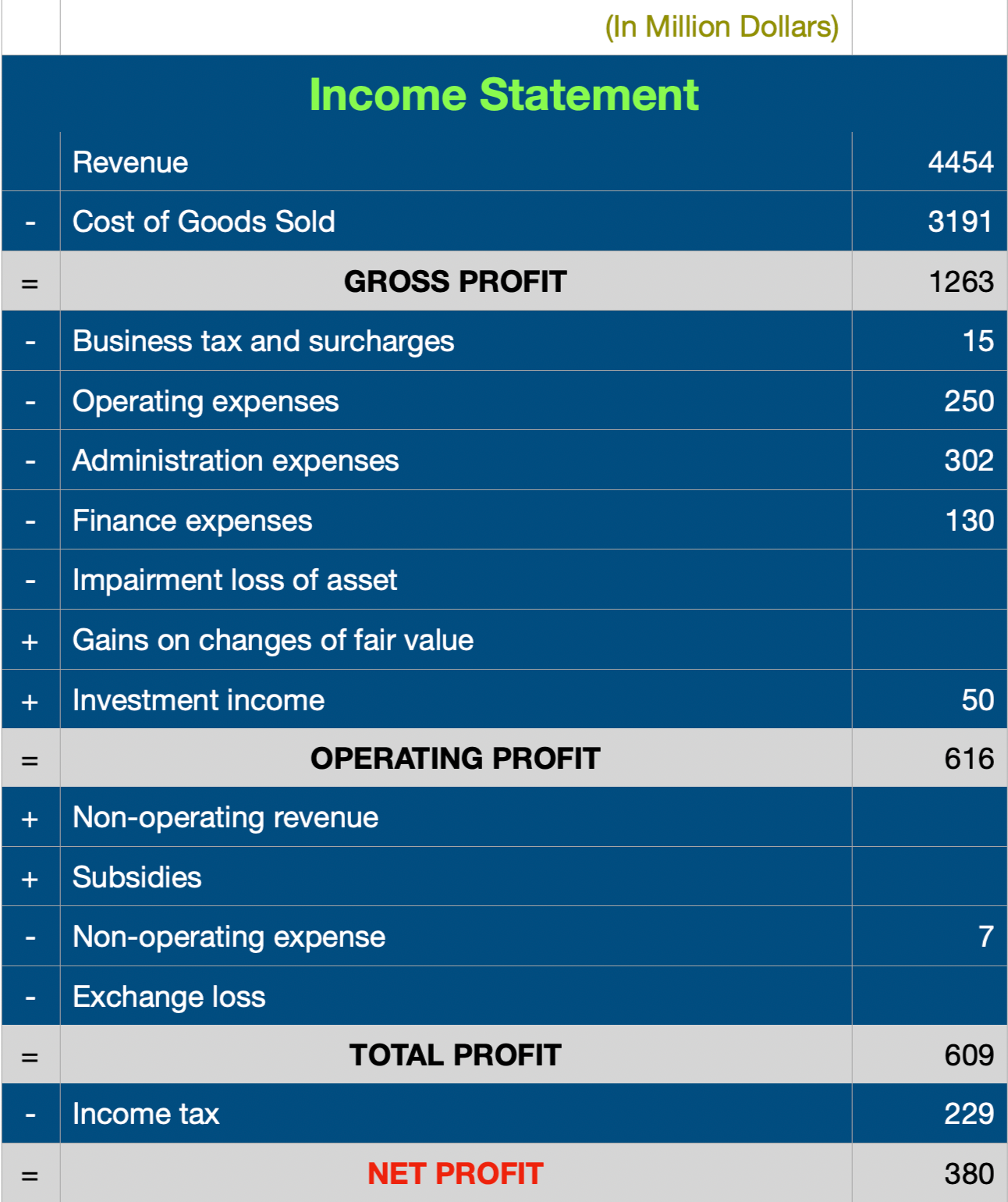
Apparently, the net profit(380) is less than 75% of the total profit(609 times 75%=456.75). In other words, the company paid more taxes. But why?
To understand this, we first need to know where the 25% business income tax has been applied. Should it be applied to the Total Profit?
The answer is no. Actually the company will need to pay 25% of its taxable income to the tax bureau as its income tax.
Unlike total profit, which is calculated based on the accounting standards, taxable income is calculated based on the tax law. That is why our total profit is different from our taxable income. Here's an example.
Let's say our company buys some advertisement, which is a form of operating expenses. According to accounting standard, we should be able to record the ad costs on the Income Statement, regardless of how much we've spent. However, the tax law actually stipulates that if a company's advertising costs exceed a certain percentage of revenue, the exceeding portion cannot be deducted from its taxes.
If we assume that this percentage cap is 2% and our company's revenue is 100 million, our tax-deductible portion will be 2 million. However, we actually spent 20 million on advertising. So even though all 20 million should be recorded as operating expenses, we actually will have to pay income tax on 18 million of those advertising costs. The taxable income now exceeds total profit by 18 million.
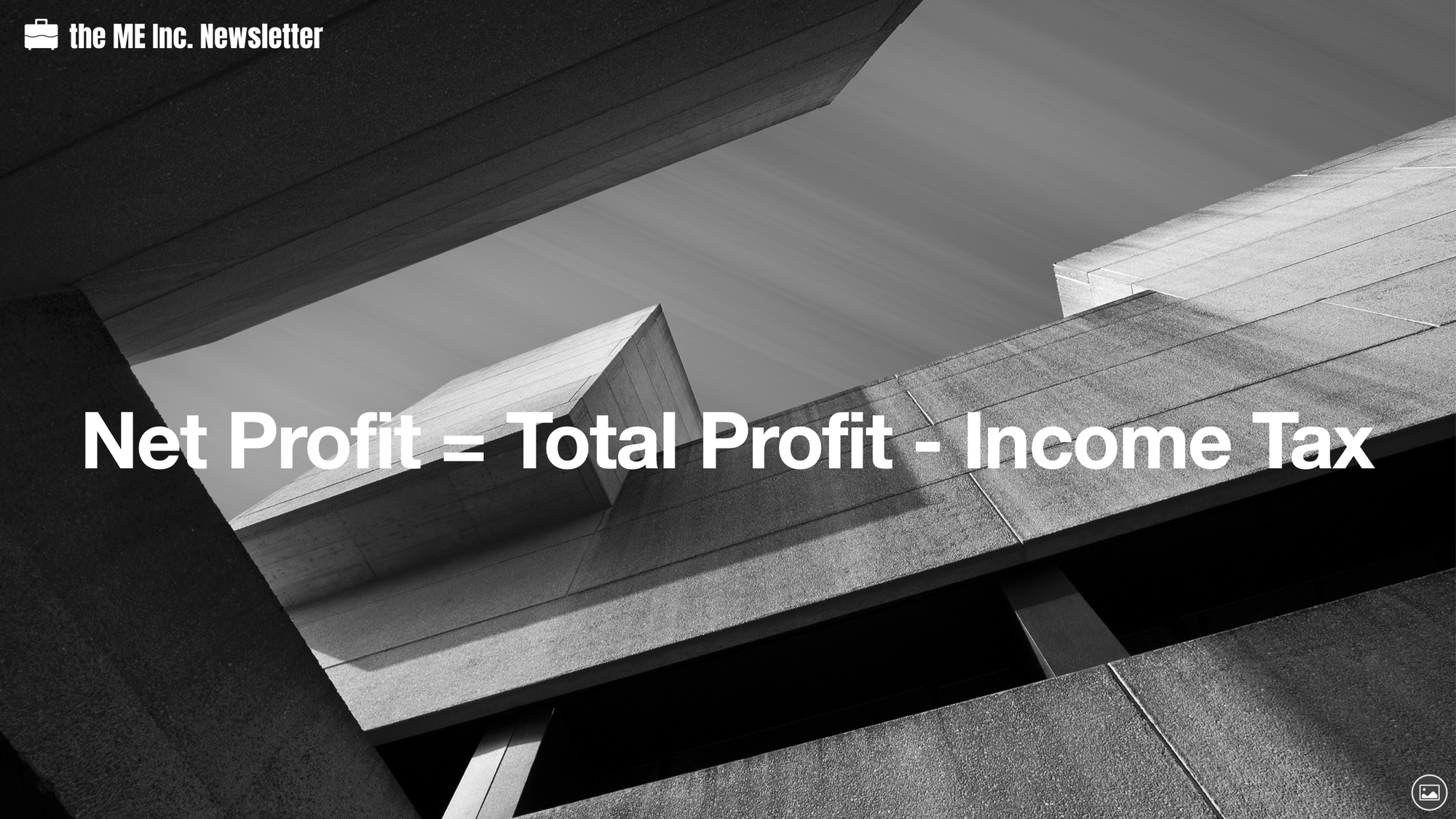
This is what the income statement is all about. So what kinds of information does an income statement tell us from an economic perspective? We will go over it in our next post.
